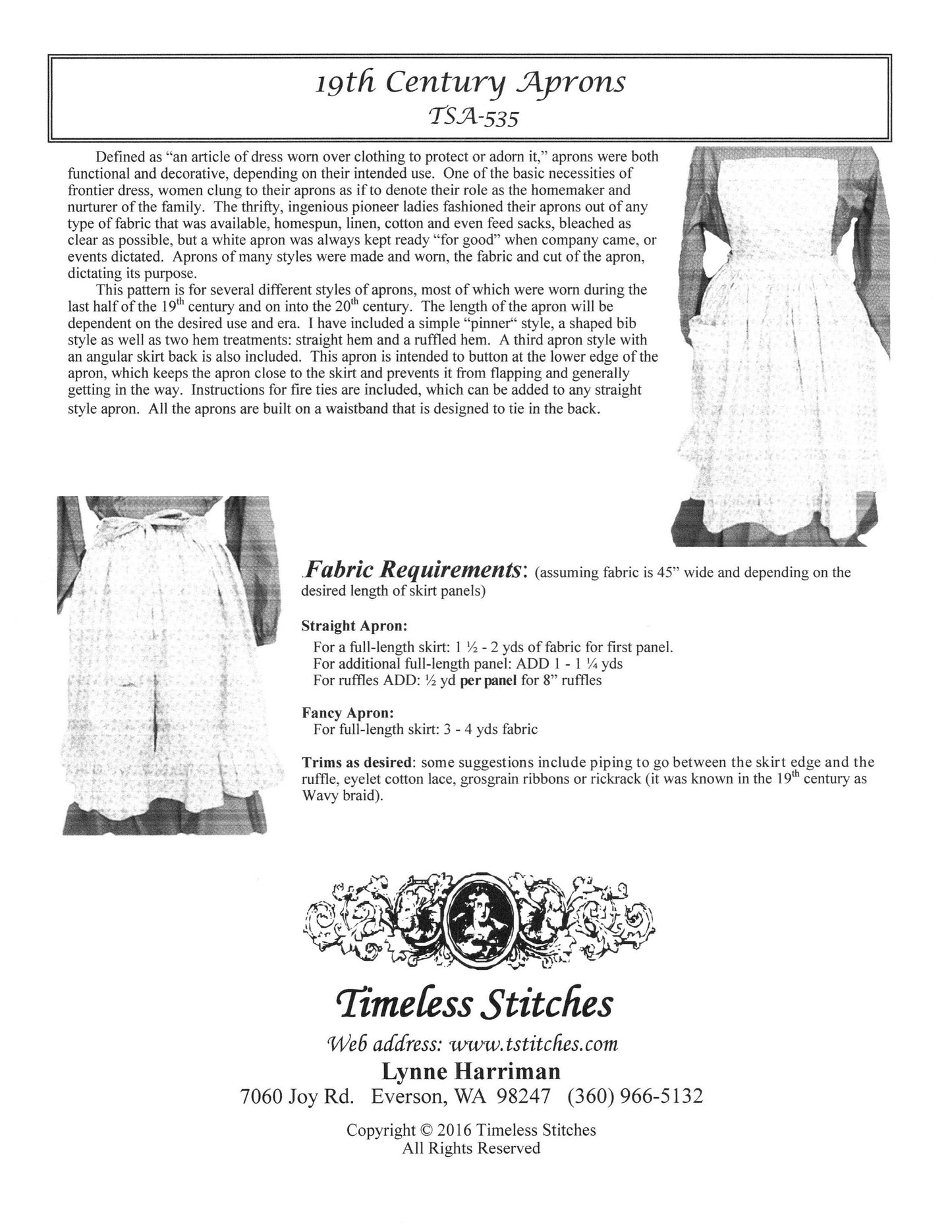Timeless Stitches
TSA-535 19th Century Aprons Sewing Pattern, Bib Aprons, Pinner apron
TSA-535 19th Century Aprons Sewing Pattern, Bib Aprons, Pinner apron
Couldn't load pickup availability
Pattern for several different styles of aprons, most of which were worn during the last half of the 19th century and on into the 20th century. The length of the apron will be dependent on the desired use and era. I have included a simple “pinner“ style, a shaped bib style as well as two hem treatments: straight hem and a ruffled hem. A third apron style with an angular skirt back is also included. This apron is intended to button at the lower edge of the apron, which keeps the apron close to the skirt and prevents it from flapping and generally getting in the way. Instructions for fire ties are included, which can be added to any straight style apron. All the aprons are built on a waistband that is designed to tie in the back.
Defined as “an article of dress worn over clothing to protect or adorn it,” aprons were both functional and decorative, depending on their intended use. One of the basic necessities of Frontier dress, women clung to their aprons as if to denote their role as the homemaker and nurturer of the family. The thrifty, ingenious pioneer ladies fashioned their aprons out of any type of fabric that was available, homespun, linen, cotton and even feed sacks, bleached as clear as possible, but a white apron was always kept ready “for good” when company came, or events dictated. Aprons of many styles were made and worn, the fabric and cut of the apron, dictating its purpose.
Timeless Stitches offers Period correct safety pins called fibulas to attach your bibs to your bodice. They are $2.00 a pair. They are available in the jewelry department.
Fabric Requirements:
(assuming fabric is 45” wide and depending on the desired length of skirt panels)
Straight Apron:
For a full-length skirt: 1 ½ - 2 yds of fabric for first panel.
For additional full-length panel: ADD 1 - 1 ¼ yds
For ruffles ADD: ½ yd per panel for 8” ruffles
Fancy Apron:
For full-length skirt: 3 yds fabric
Trims as desired: some suggestions include piping to go between the skirt edge and the ruffle, eyelet cotton lace, grosgrain ribbons or rickrack (it was known in the 19th century as Wavy braid).
Sizing: This pattern is adaptable for all waist sizes.
This listing is for a new, hard copy pattern and not a finished garment. A digital download is available.
Share








